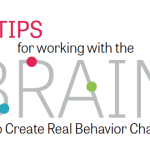3 reasons why you're struggling with change

Have you ever noticed that people are resistant to change? That's why 70% of change initiatives fail in today's businesses, and also why most New Year's resolutions don't make it past Valentine's Day.
Wired to resist change
The resistance is probably more noticeable when a change is put upon a person, like a reorganization of a work team, or having to switch to different software or systems. But resistance can even happen when we are the ones driving the change. Whether you are initiating a personal change or leading a major change initiative, the safe factors are at play.
A large part of our resistance to change is biological. We are wired for survival, and our brain naturally sees change as a potential warning sign of danger. Just think back to our tribal days living on the land. Noticing that the bush over there doesn't look like it did yesterday was the difference between being attacked and killed or surviving. Even though our modern world is generally safer, our ability to read differences in our environment is still deeply tied to our survival. So change creates a subtle sense of unease, even when we are excited about the change.
Another aspect is that our brain is designed to create habits. When we do behaviors over and over again, the basal ganglia routinizes the behavior so that it doesn't have to take up energy in our neocortex, the thinking part of our brain. Often, change requires us to let go of an old, comfortable well-grooved habit while we form the new one. New behaviors can be awkward and uncomfortable until we get to the 40-60 repetitions it takes for a habit to be fully formed.
Because of our drive for constancy and our attachment to habits, humans have a psychological response to change. When faced with change, we can have a range of feelings from hope and excitement to anxiety and anger, sometimes all at once.
Think about something positive you experienced, like a great promotion. You probably felt happy and excited one minute and then maybe worried about doing a good job the next. And if the change is threatening, like being fired, the feelings can be negative and intense.
The emotions of change and why we resist change
Research has proved that humans actually have a predictable pattern of emotions with regards to change. It's called the Change Curve and it looks like a roller coaster. The change curve unfolds over time and shows the impact change has, both positive and negative, on productivity and morale.
When change is announced, the status quo is disrupted. This can create feelings of shock and anxiety, and sometimes excitement. People tend to question the change or even ignore it and not take it that seriously. Hallmark phrases here are "I can't believe they're doing this." And "How will this impact me?"
Then people move into the next stage, which is marked by resistance. They feel frustration and even anger. People will focus on details, ask picky questions, and challenge the decision. Comments here are "We don't need this." Or "It's unfair and I can't deal with it." This is also where you will see a drop in productivity and morale.
Next is the bottom of the curve where things start to turnaround. People may feel initial despair or even depression, but eventually they let go and start to accept that the change is inevitable. You might first hear things like, "This is going to fail" or "I can't do this." This is when people are most likely to quit. But hang in there. You'll soon start to hear, "I guess this is going to happen. I better get on board."
That's when you know are you on the upswing and you've moved into exploration. People are now ready to learn more about the change - they're curious and open to hearing about the change. You may find yourself repeating much of what you've been saying all along - but now they've stopped resisting and are actually curious. Phrases here include "What's this all about?" and "Huh, this might actually work."
Now you have momentum and you move into the embracing stage. People have fully accepted the change and are actually excited about implementing it. Productivity and morale are back to prior levels and you hear things like, "This is going to work" and "It's going to be a good change."
Finally, you have the aftermath of the change, which is where people can see the results of the change. At first there is excitement about the accomplishment, and you'll hear things like, "We did it!" And "How did we ever get by before this?" And then things settle down and you are back to the status quo.
Coping with change
Now, there are differences among people and how they deal with change. Some people are more comfortable with change-they are natural risk takers and enjoy the excitement of change. While others are at the other end of the spectrum and are more conservative, finding change very uncomfortable.
Understanding the Change Curve can help you prepare for the natural ups and downs of change. You can intentionally prepare for the various emotions you'll experience. And you can give yourself time to build the new behaviors and habits that the change requires.
Related Blogs
JOIN OUR COMMUNITY
Be the first to know of Dr. Britt Andreatta's latest news and research.





